Northern Railway Extension receives green light
April 2005
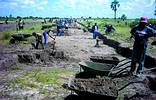
Windhoek Consulting Engineers was appointed as consulting engineers for the Northern Railway Extension. They are responsible for all aspects regarding the design and construction supervision of the total project valued at N$ 1,4 billion. The project is currently divided into three phases: Phase one Tsumeb to Ondangwa 250 km, Phase two Ondangwa to Oshikango 59 km and Phase three Ondangwa to Oshakati 58 km.
The project was initiated in response to the government of Namibia's vision to develop Northern Namibia. This includes future plans for a new harbour at Cape Fria on the Skeleton Coast as well as a brand new road and rail link from Ondangwa to Cape Fria some 800 km long. "We are currently busy constructing the line from Tsumeb to Ondangwa in phase one of the Northern Railway Extension. This 245 km railway line has an estimated construction cost of N$ 850 million and is expected to be completed in December 2006," explains Victor Rieger, Engineering Associate at Windhoek Consulting Engineers.

Victor Rieger, Windhoek Consulting Engineers
Aerial photography was used to assist the team with the alignment, which according to Victor was challenging to say the least. "Of the 245 km approximately 88 km falls on commercial farm land. The remainder of the railway goes through communal land that is scattered with shacks, schools, graveyards, kraals, and other obstacles. We conducted a three-month survey to accumulate the necessary information for the final horizontal and vertical design. But we often had to make changes to the alignment during the design and construction phase due to some burial graves that were encountered. These graves were not even marked and local residents often had to point them out to the construction team on site," explains Victor.
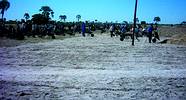
The first 88 km of the project was done using normal construction methods, while the rest of the venture was labour intensive. Workers were used to convey sub ballast material from borrow pits and fill material onto the embankment. It is likely that the project will be in progress till 2008 and will generate large-scale employment. More than 17 800 people have already been employed on the project to assist with manual labour.
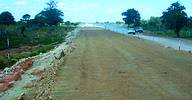
Victor attributes the success of his projects to the speed and efficiency of Civil Designer and admits to being a loyal user for three years. "I enjoy working with the program. It has simplified our lives to such an extent that we no longer have to spend long hours trying to create a drawing when the program performs this operation in a matter of seconds. It has definitely increased our productivity and we are always assured of high quality work and a professional presentation," says Victor.
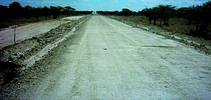
Phase two of the project entails the construction of a 59 km railway line from Ondangwa to Oshikango. The estimated construction cost is N$ 329 million and is likely to be completed in December 2007. Phase three aims to extend a further 38 km railway line from Ondangwa to Oshakati and has an estimated construction cost of N$ 220 million. This final phase will be completed in December 2008.
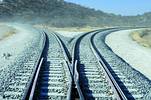
"It is such an incredible privilege to be working on assignments of this magnitude. The scope is endless! The earthwork embankment in phase one is currently 80% complete and we have also since completed 90 km of permanent way construction," notes Victor.
Upgrading of MR 67 between Kamanjab and Omakange
Besides the massive Northern Railway Extension that Windhoek Consulting Engineers are working on, they are also engaged in the MR 67 road upgrade. "We are currently working on a very interesting road upgrade of Main Road 67 between Kamanjab and Omakange in the north of Namibia. The project was requested by the Roads Authority of Namibia, and consists of 204 km of gravel road that will be upgraded to a bitumen surface standard," explains Victor.
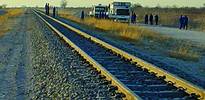
The survey for the road upgrade entailed a study of the entire servitude complete with drainage structures. The team also performed an hydraulic investigation of all the bridges and stormwater structures to determine if any structure needed to be adjusted. "We used the information to determine the horizontal and vertical alignment," explains Victor, adding that their primary focus during the project was to ensure a cost effective design by optimising the alignment to tie in with the existing drainage structures and other features along the road.
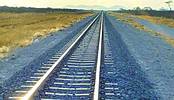
Although the project was extremely interesting, there were many design challenges. The road was originally designed with an 80 km/h design speed. This meant that there were a number of cuts and fills that had to be re-designed in order to accommodate the increased design speed. In addition, approximately 80 km of the road bordered the Etosha National Park, making the road with farms and lodges along the route, a tourist attraction. In one particular stretch of approximately 5 km, the steep grades and sharp turns were so severe that the design speed had to be reduced to 100 km/h. "We decided to reduce the design speed to 100 km/h due to the environmental restrictions as we did not wish to change the horizontal alignment of the road," notes Victor. The construction, estimated at N$ 300 million, has been divided into two sections with the construction of the first section due to commence in July 2005.
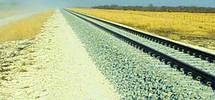
For more information contact Yolanda Desai, Knowledge Base Software, 021 701 1850, yolanda@knowbase.co.za
Others who read this also read these articles
The high-end MCAD and cPDm market segments of the PLM strategy
CIMdata considers the high-end MCAD market to include only those few CAD solution providers that deliver very comprehensive computer-aided design and analysis capabilities that are also tightly integrated with an enterprise-capable cPDm solution from the same supplier[ December 2005 ]
SA's prototype designers awarded
The SABS Design Institute is the driving force behind design promotion in the country through various award schemes, supporting innovation and entrepreneurship[ October 2005 ]
2D to 3D: the path to better products, faster and cheaper
Modern 3D CAD systems allow designers and engineers to edit a few parameters and automatically create the downstream deliverables for unique variants in minutes, instead of days or weeks[ October 2005 ]
ECL in Africa
ECL ensures a worldwide coverage of its client base through local service units which incorporate all the ECL know-how[ August 2005 ]
Catia brings business to South Africa
The fact that the A400M contracts were awarded to local enterprises is a strategic breakthrough for the South African aerospace industry[ August 2005 ]
Strand7 analyses the Beijing Water Cube
The latest Strand7 Release 2.3 has added the capability to take site specific seismic time histories and simply create equivalent spectral curves[ June 2005 ]
Pro/E versus SolidWorks
In summary, SolidWorks' swept surfaces and solids are more limited in their capabilities than Pro/Engineer's[ June 2005 ]
Extreme confidence to build extreme bikes
Santa Cruz Bicycles creates radical bikes that are faster cross-country, faster downhill and faster to market.[ December 2004 ]
Others who read this also read these news items
Digitising a standard racing engine provides a springboard for future improvements
[ December 2005 ]
Nelson Mandela Metropolitan University leads the way with Catia V5
[ December 2005 ]
Integrated CNC solution for SA tooling industry
[ December 2005 ]
Accelerated design at Donkin Fans
[ December 2005 ]
PGF transforms its vision into reality
[ December 2005 ]
Defy introduces new product range
[ October 2005 ]
New Smarts for legal eagles
[ October 2005, Cadshop ]
Vectorworks scores with architects on ease of use
[ October 2005 ]
Others who read this also read these regulars
Search Site
Subscribe
Previous Issues
Other Technews Publications
Other Technews Buyers Guides
 |  | Copyright c1995-2009 Technews Publishing (Pty) Ltd.. All rights reserved. |